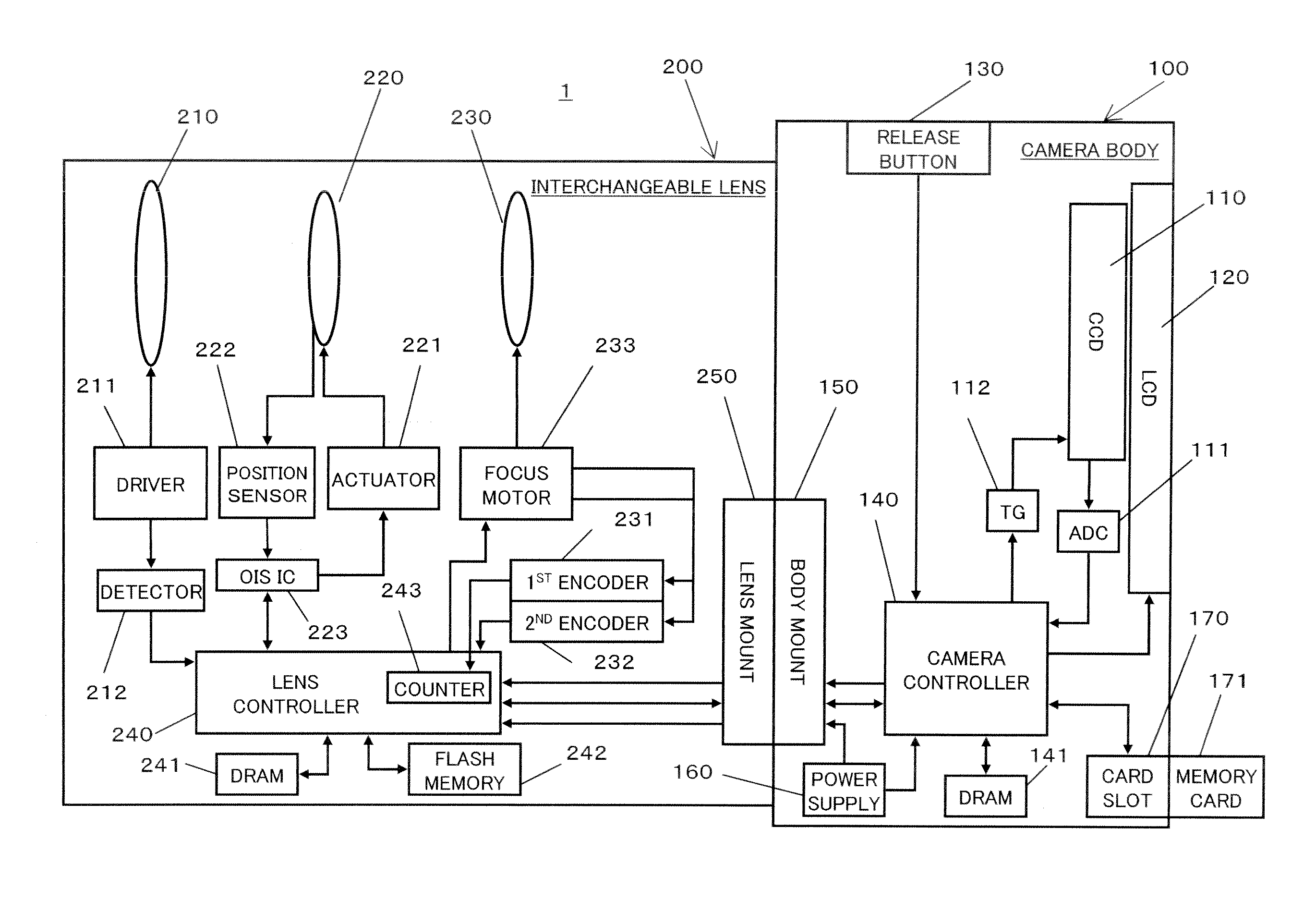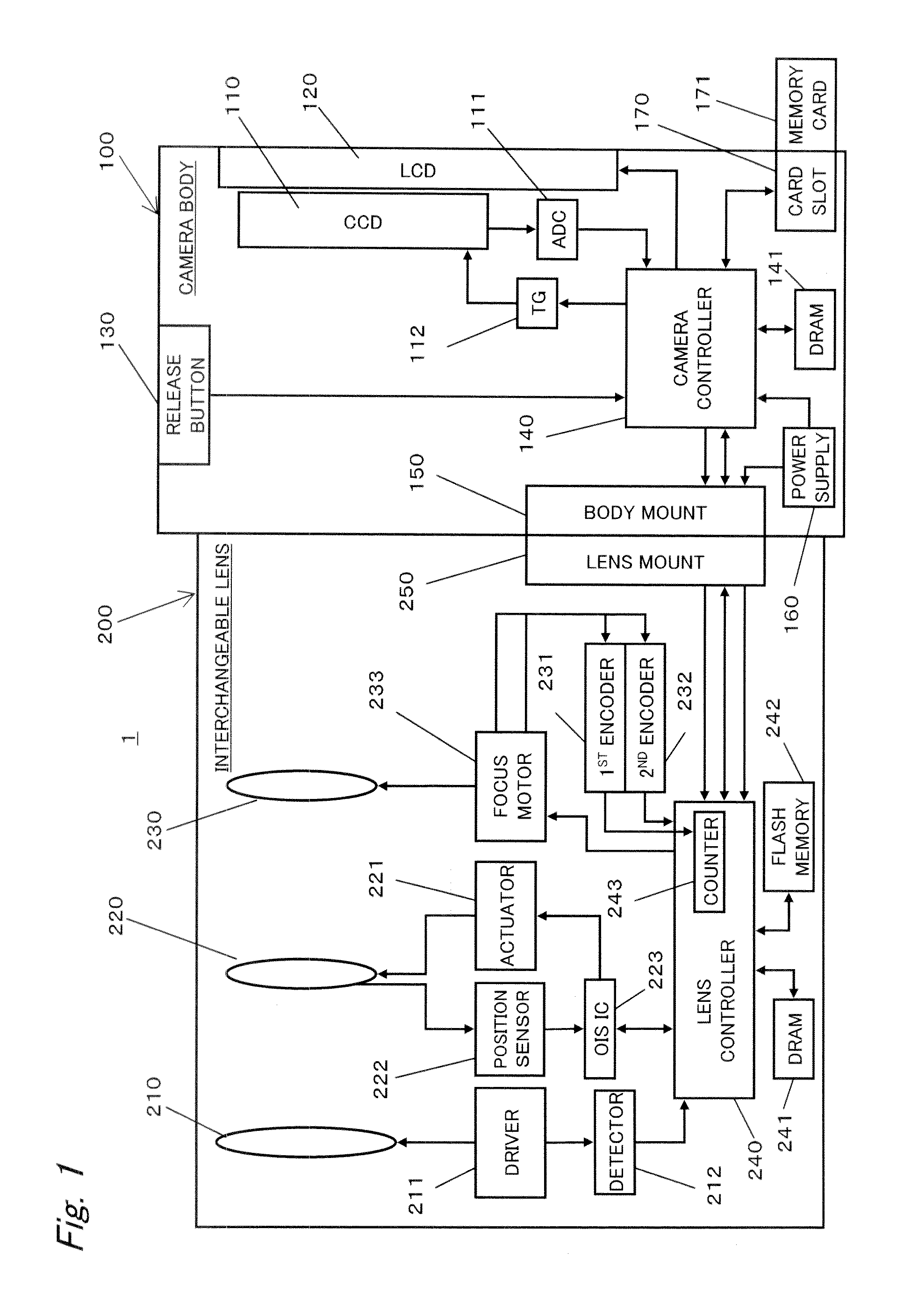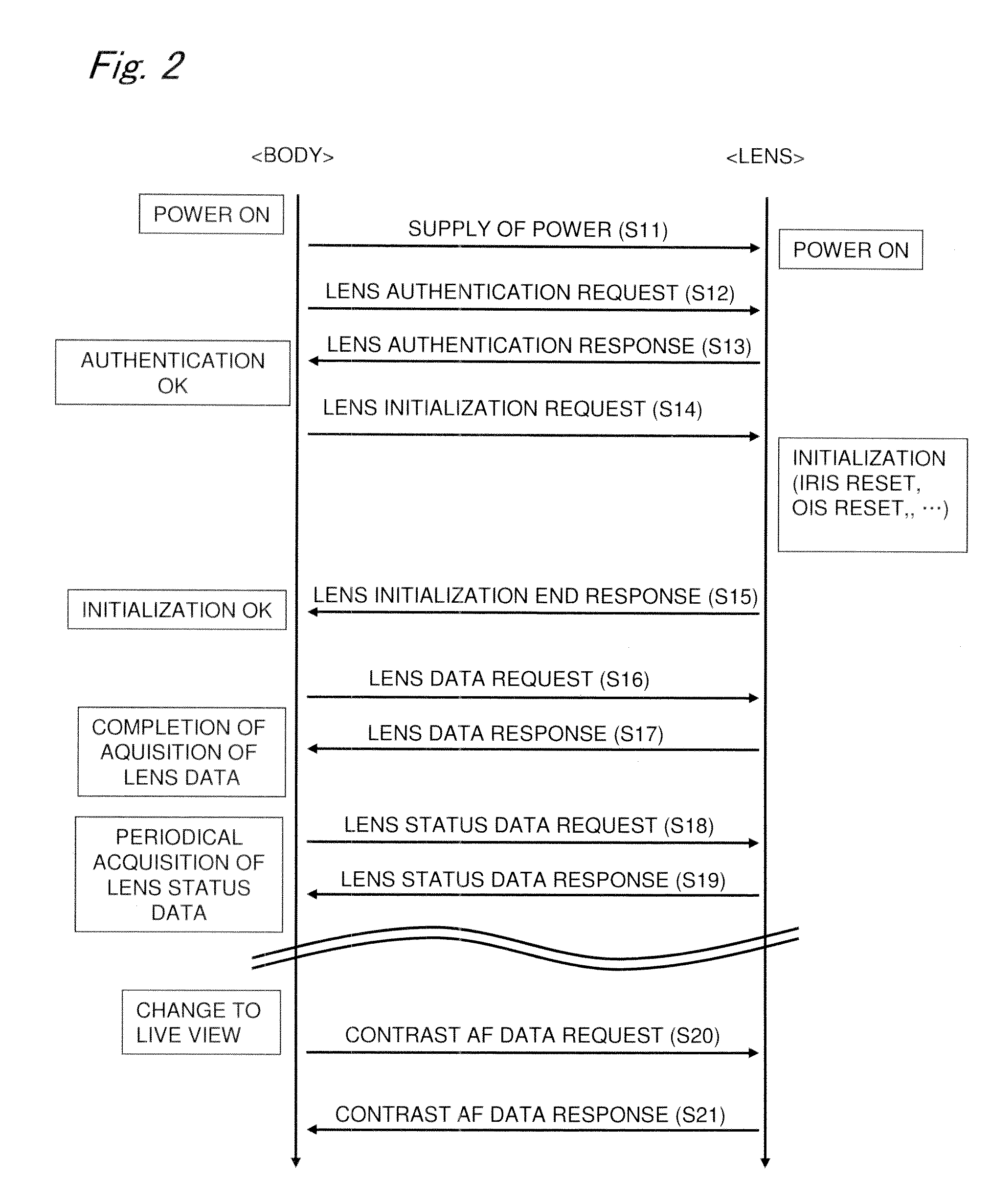Camera system
a technology of interchangeable lenses and cameras, applied in the field of lenses interchangeable camera systems, can solve the problems of not revealing the improvement in the accuracy of the focus information itself, and achieve the effects of reducing the time required to detect the focus position in reducing the frequency of communicating focus lens position information, and improving the accuracy of the contrast autofocus operation
- Summary
- Abstract
- Description
- Claims
- Application Information
AI Technical Summary
Benefits of technology
Problems solved by technology
Method used
Image
Examples
first embodiment
1-1. Configuration
[0029]1-1-1. Overview
[0030]FIG. 1 is a block diagram showing a configuration of a camera system according to embodiments. A camera system 1 includes a camera body 100 and an interchangeable lens 200 mountable to the camera body 100. The camera system 1 can perform an autofocus operation in a contrast method, based on image data generated by a CCD image sensor 110.
[0031]1-1-2. Configuration of the Camera Body
[0032]The camera body 100 includes the CCD image sensor 110, a liquid crystal display (LCD) monitor 120, a camera controller 140, a body mount 150, a power supply 160, and a card slot 170.
[0033]The camera controller 140 controls the entire operation of the camera system 1 by controlling components such as the CCD image sensor 110 in response to an instruction from operation members such as a release button 130. The camera controller 140 transmits a vertical synchronizing signal to a timing generator 112. In parallel with this, the camera controller 140 generates...
second embodiment
[0094]The present embodiment describes another example of the contrast AF operation. The configuration and basic operation of the camera system 1 are the same as those in the first embodiment.
[0095]FIG. 6 is a flowchart of a contrast AF operation according to the present embodiment. Steps S201 to S205 and steps S211 to S214 are respectively the same as steps S101 to S105 and steps S107 to S110 in the flowchart of FIG. 5 according to the first embodiment.
[0096]An exposure synchronizing signal is transmitted from a camera controller 140 to a lens controller 240, and position information of a focus lens 230 is stored in a DRAM 241 by the lens controller 240. An AF evaluation value of image data obtained from a CCD image sensor 110 is calculated by the camera controller 140 (S201 to S205). Then, the camera controller 140 determines whether the CCD image sensor 110 has completed exposure for a predetermined number of frames (S206). In the present embodiment, the predetermined number is t...
third embodiment
[0112]In the second embodiment, in order to prevent a collision between an exposure synchronizing signal and a position information request command, a predetermined prohibition period is provided after the transmission of a position information request command and during the prohibition period the transmission of an exposure synchronizing signal is prohibited (stopped). The present embodiment describes an example in which in order to prevent a collision between an exposure synchronizing signal and a position information request command, the transmission timing of a position information request command is shifted so that the transmission of an exposure synchronizing signal does not take place during a prohibition period. The configuration and basic operation of the camera system 1 are the same as those in the first embodiment.
[0113]FIG. 9 is a flowchart of a contrast AF operation according to the present embodiment. Steps S301 to S305 and steps S309 to S312 are respectively the same ...
PUM
 Login to View More
Login to View More Abstract
Description
Claims
Application Information
 Login to View More
Login to View More - R&D
- Intellectual Property
- Life Sciences
- Materials
- Tech Scout
- Unparalleled Data Quality
- Higher Quality Content
- 60% Fewer Hallucinations
Browse by: Latest US Patents, China's latest patents, Technical Efficacy Thesaurus, Application Domain, Technology Topic, Popular Technical Reports.
© 2025 PatSnap. All rights reserved.Legal|Privacy policy|Modern Slavery Act Transparency Statement|Sitemap|About US| Contact US: help@patsnap.com



